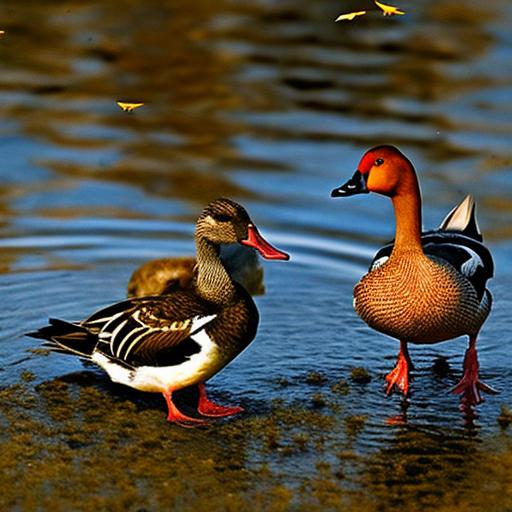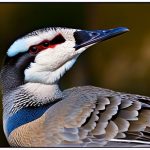Feeding ducks and geese can be a delightful experience for people of all ages. There is something inherently joyful about watching these graceful creatures gather around, eagerly accepting the food we offer them. However, it is important to understand their behavior and feeding habits in order to avoid any negative consequences. By being knowledgeable about their needs and preferences, we can ensure that our interactions with ducks and geese are positive and beneficial for both parties involved.
Key Takeaways
- Geese and ducks have different feeding behaviors and preferences.
- The location of the feeding area can attract or repel ducks and geese.
- Physical barriers can prevent geese from accessing the feeding area.
- Distractions and noise can deter geese from staying in the area.
- Visual deterrents and decoys can trick geese into thinking the area is unsafe.
- Changing feeding times can avoid conflicts with geese.
- Enlisting the help of a professional can be effective in managing geese.
- It is important to respect all wildlife in the area and not harm them.
Understanding the behavior of geese and ducks
Ducks and geese are both waterfowl, but they have distinct differences in their behavior and feeding habits. Ducks are generally smaller in size and have a more varied diet, consisting of both plant matter and small aquatic animals. They are known for their ability to dive underwater to find food. Geese, on the other hand, are larger and primarily herbivorous, feeding on grasses, grains, and other vegetation. They are often found grazing on land or floating in bodies of water.
When it comes to interacting with humans, ducks tend to be more comfortable and approachable. They are accustomed to being fed by people in parks and other public spaces. Geese, on the other hand, can be more aggressive and territorial, especially during breeding season. It is important to approach geese with caution and respect their space.
Choosing the right location for feeding ducks
Choosing a safe and appropriate location for feeding ducks is crucial for their well-being as well as our own safety. It is important to find a spot that is away from busy roads or areas with heavy foot traffic. Feeding ducks near water sources such as ponds or lakes is ideal, as it allows them to access their natural habitat easily.
Feeding ducks in certain areas can pose potential dangers for both the ducks and humans. For example, feeding them near roads increases the risk of accidents as ducks may wander onto the road in search of food. Feeding them in areas with excessive human activity can also lead to overcrowding and competition for food, which can be detrimental to the ducks’ health.
Using physical barriers to keep geese away
If you are dealing with geese that are becoming a nuisance, using physical barriers can be an effective way to keep them away from certain areas. Fences and netting can be used to create a physical barrier that prevents geese from accessing specific locations. However, it is important to ensure that these barriers do not cause harm to the geese or disrupt their natural behavior.
When using physical barriers, it is crucial to consider the safety of the geese. For example, if you are using netting, make sure it is securely fastened and does not pose a risk of entanglement for the geese. It is also important to regularly check and maintain these barriers to ensure their effectiveness.
Creating a distraction for geese
Creating a distraction can be an effective way to divert the attention of geese away from certain areas. By providing an alternative food source or attraction, you can encourage geese to move away from places where they may be causing problems.
One example of an effective distraction is planting a separate area with grasses or other vegetation that geese find appealing. By providing them with an alternative grazing area, you can reduce their presence in unwanted locations. Another option is to use decoy food, such as corn or grains, in a designated feeding area away from sensitive areas.
Using noise to deter geese

Geese are sensitive to noise and can be easily deterred by loud sounds. Using noise as a deterrent can be an effective way to keep geese away from certain areas. There are various methods of creating noise that can be used, depending on the specific situation.
One example of an effective noise deterrent is using a portable air horn or whistle. The loud sound produced by these devices can startle geese and make them uncomfortable, causing them to move away from the area. Another option is using a motion-activated noise device that emits loud sounds when geese approach. This can be particularly useful in areas where constant human presence is not possible.
Using visual deterrents to keep geese away
Visual deterrents can also be effective in keeping geese away from certain areas. Geese are wary of unfamiliar objects and will often avoid areas where they perceive a potential threat. By strategically placing visual deterrents, you can create an environment that is unappealing to geese.
Scarecrows are a classic example of a visual deterrent that can be effective in keeping geese away. The presence of a scarecrow can create the illusion of a potential predator, causing geese to avoid the area. Reflective tape or shiny objects can also be used to create visual disturbances that deter geese.
Changing feeding times to avoid geese
Changing feeding times can be an effective way to avoid conflicts with geese. Geese are most active during certain times of the day, such as early morning and late afternoon. By adjusting your feeding schedule to times when geese are less likely to be present, you can minimize the chances of encountering them.
For example, if you typically feed ducks and geese in the late afternoon when they are most active, consider changing your feeding time to early morning or midday when they are less likely to be around. This can help reduce competition for food and minimize the risk of conflicts with geese.
Using decoys to trick geese
Using decoys can be an effective way to trick geese into avoiding certain areas. Decoys mimic the appearance of real geese and can create the illusion of a larger flock or potential threat. By strategically placing decoys in areas where you want to deter geese, you can create an environment that is unappealing to them.
One example of an effective decoy is a floating goose decoy placed in a body of water. The presence of the decoy can deter geese from landing or swimming in that area. Another option is using stationary decoys placed on land to create the illusion of a larger flock, which can discourage geese from approaching.
Enlisting the help of a trained animal control professional
In some situations, it may be necessary to seek the help of a trained animal control professional. If you are dealing with a persistent problem with geese or ducks that cannot be resolved using other methods, it is important to consult with an expert who has experience in dealing with wildlife.
Animal control professionals have the knowledge and expertise to assess the situation and provide appropriate solutions. They can help implement strategies that are safe and effective for both humans and wildlife. It is important to remember that wildlife should be treated with respect and handled by professionals who understand their behavior and needs.
Understanding the importance of respecting all wildlife in the area
While feeding ducks and geese can be a delightful experience, it is important to remember that they are wild animals and should be treated with respect. It is crucial to avoid overfeeding them or providing them with unhealthy food options. Feeding them excessive amounts of bread or other processed foods can lead to health problems and dependency on human food sources.
Respecting all wildlife in the area also means being mindful of their natural habitat and not disturbing their nesting or breeding areas. It is important to observe from a distance and avoid approaching or touching wild animals. By showing respect for wildlife, we can ensure their well-being and preserve their natural behaviors.
Feeding ducks and geese can be a wonderful way to connect with nature and enjoy the beauty of these graceful creatures. However, it is important to understand their behavior and feeding habits in order to avoid any negative consequences. By choosing the right location, using physical barriers, creating distractions, and employing other deterrent methods, we can ensure that our interactions with ducks and geese are positive and beneficial for both parties involved. Let us enjoy feeding ducks and geese responsibly, respecting their needs and preserving their natural behaviors.
If you’re someone who enjoys feeding ducks but constantly finds geese intruding on your peaceful activity, you might be interested in learning how to keep geese away. While feeding the ducks can be a delightful experience, dealing with aggressive geese can quickly turn it into a hassle. Fortunately, there are effective methods to deter geese from encroaching on your duck-feeding territory. To find out more about keeping geese at bay while enjoying your time with the ducks, check out this informative article on Poultry Wizard.
FAQs
What are some effective ways to keep geese away while feeding ducks?
There are several effective ways to keep geese away while feeding ducks, including using decoys, installing barriers, and using noise deterrents.
What are decoys and how do they work?
Decoys are objects that resemble geese and are placed in the area where ducks are being fed. Geese are territorial and will avoid areas where they see other geese, even if they are fake.
What types of barriers can be used to keep geese away?
Barriers such as fences, netting, and hedges can be installed to keep geese away from the area where ducks are being fed. These barriers should be at least 3 feet tall to be effective.
What are some noise deterrents that can be used to keep geese away?
Noise deterrents such as air horns, whistles, and clappers can be used to scare geese away from the area where ducks are being fed. These should be used sparingly and not too close to the ducks.
Is it safe to use physical force to keep geese away?
No, it is not safe to use physical force to keep geese away. Geese can become aggressive and may attack if they feel threatened. It is best to use non-violent methods to deter geese.
Meet Walter, the feathered-friend fanatic of Florida! Nestled in the sunshine state, Walter struts through life with his feathered companions, clucking his way to happiness. With a coop that’s fancier than a five-star hotel, he’s the Don Juan of the chicken world. When he’s not teaching his hens to do the cha-cha, you’ll find him in a heated debate with his prized rooster, Sir Clucks-a-Lot. Walter’s poultry passion is no yolk; he’s the sunny-side-up guy you never knew you needed in your flock of friends!







